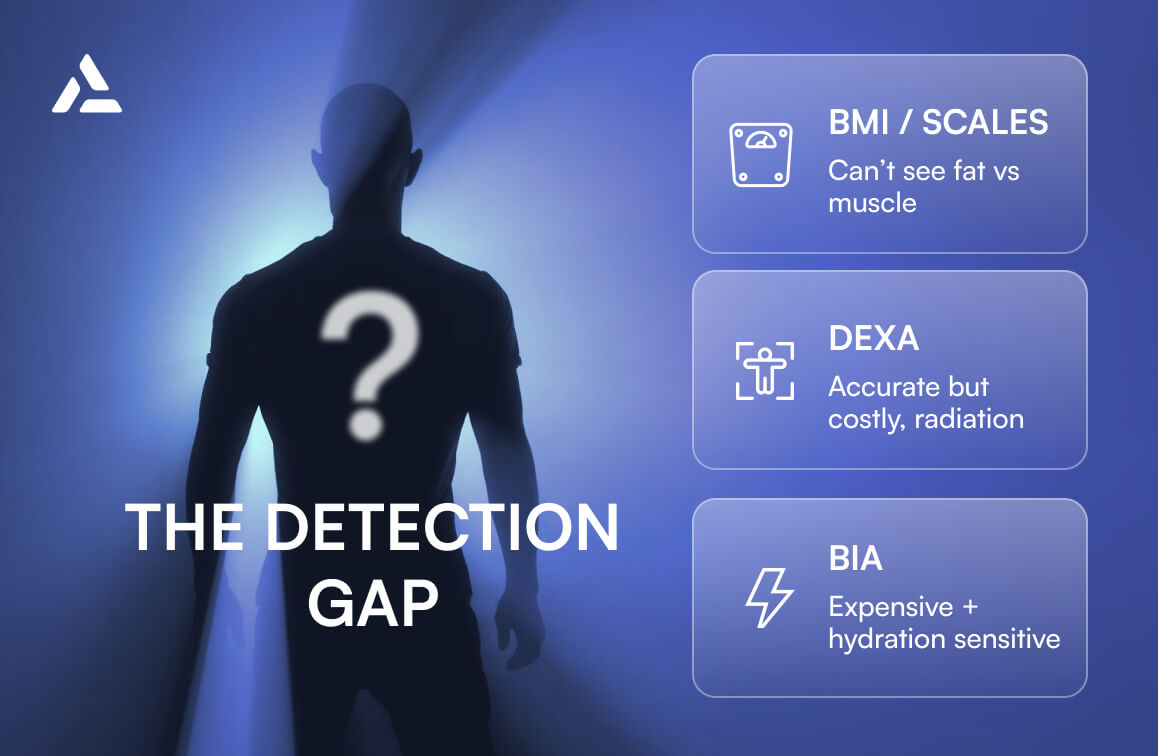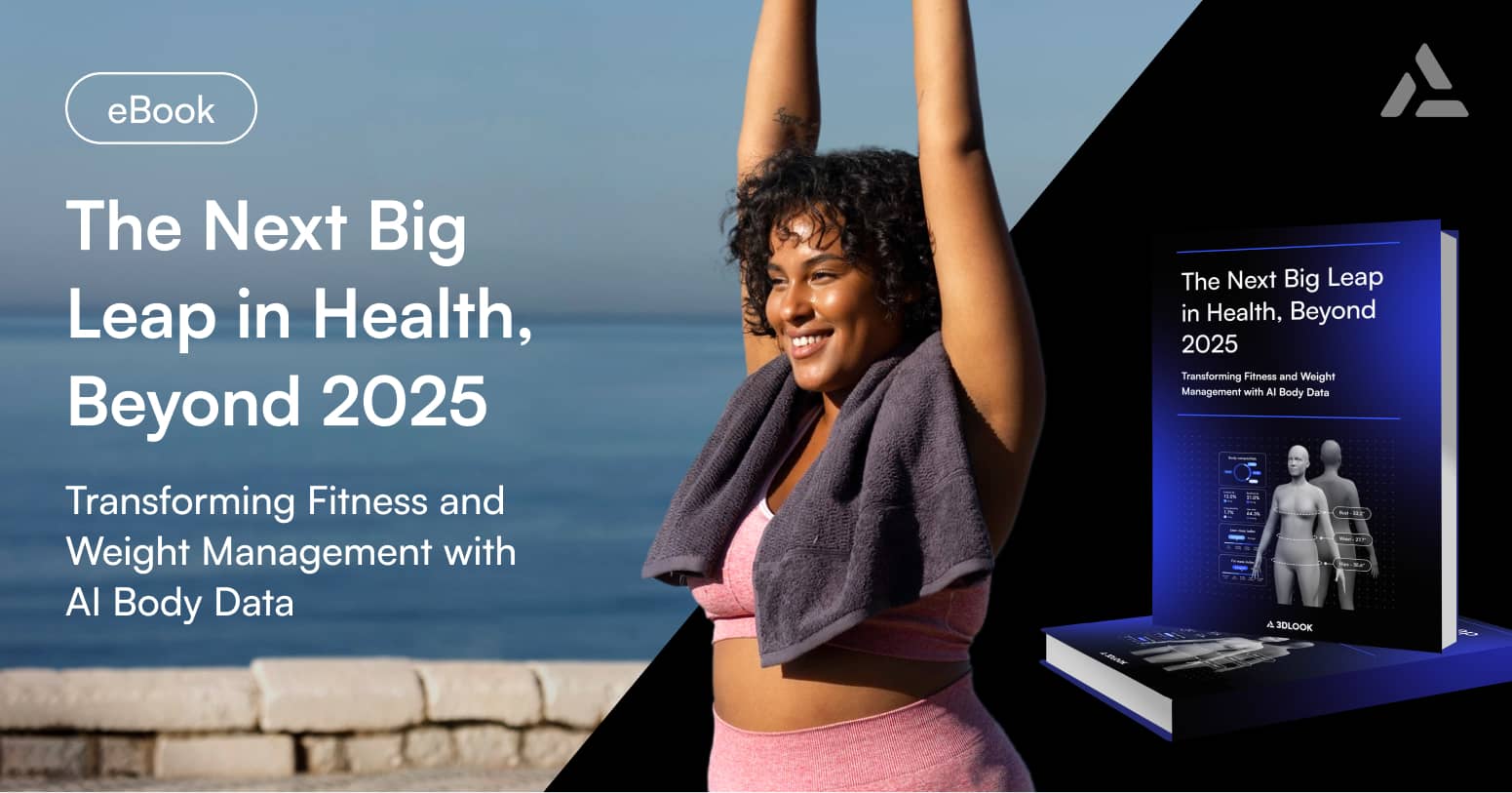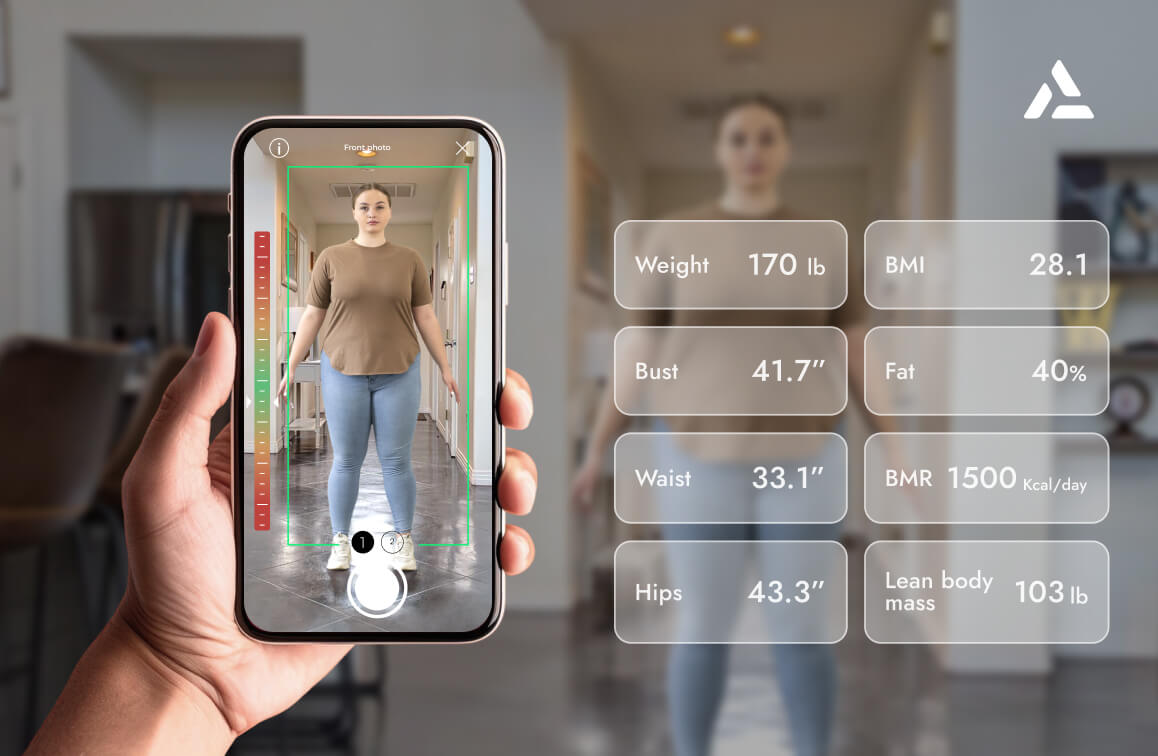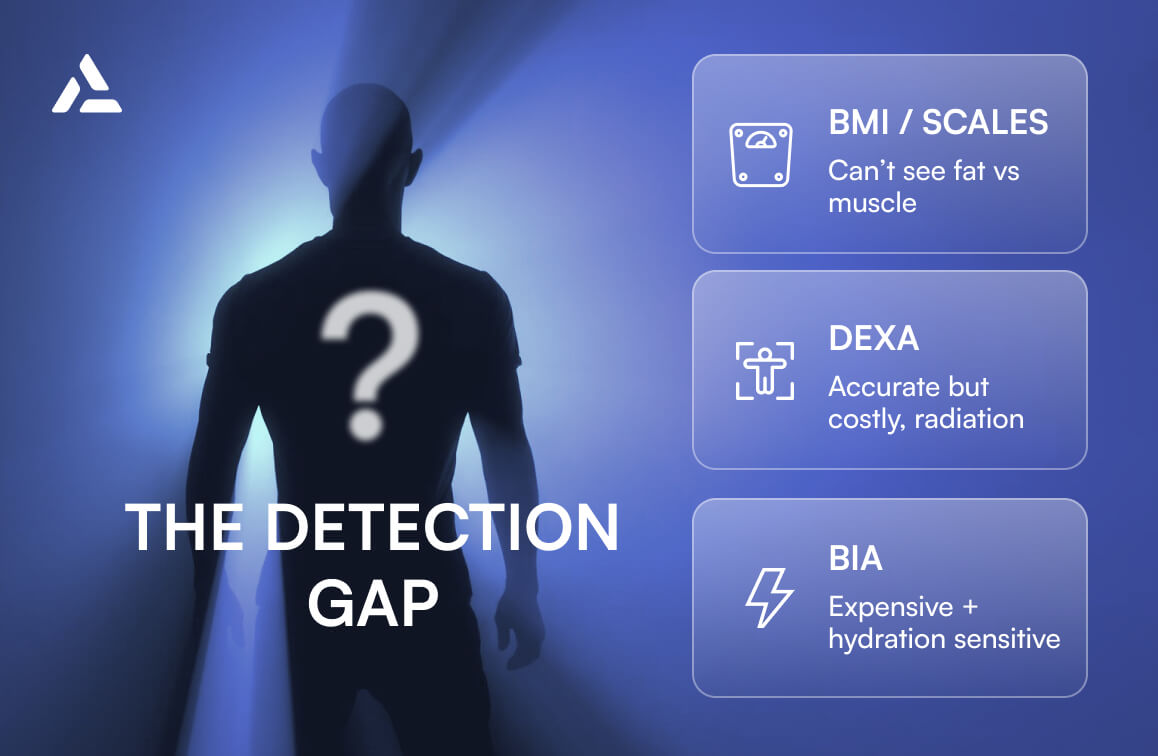While 73% of fitness professionals rely on weight measurements for client progress, research reveals why this misses the complete picture. A client might gain 3 pounds of muscle while losing 3 pounds of fat—a transformation invisible to scales but critical for business success.
The global body composition analyzer market is projected to grow from $2.64 billion in 2025 to $15.3 billion by 2037, with 46% of Millennials wanting quantifiable health data and 54% likely to purchase body-analyzing devices.
Bioelectrical impedance analysis (BIA) measures body composition by passing a weak electric current through the body and measuring voltage to calculate impedance. Popular since the mid-1980s due to ease of use and portability.
The principle: Different tissues conduct electricity differently. Muscle contains more water and conducts electricity easily (low impedance). Fat has less water content and higher resistance. BIA estimates body composition based on these electrical differences.
How BIA Technology Works
BIA measures how low‑voltage current (≈ 70 µA) travels through body tissues, differentiating between water, muscle (low resistance) and fat (high resistance).
BIA System Types
Single-Frequency BIA: Uses 50 kHz frequency with 4 electrodes. Combines impedance with age, gender, and anthropometric data using regression equations.
Multi-Frequency BIA: Uses multiple frequencies for better total body water prediction than single-frequency systems.
Segmental Systems: Advanced systems measure the body as five cylinders (arms, legs, torso) instead of one, significantly improving accuracy.
What BIA Measures
- Body Fat Percentage: Proportion of total weight composed of fat
- Fat-Free Mass: Muscle, bone, blood, and organs
- Total Body Water: Intracellular and extracellular water content
- Phase Angle: Cell membrane integrity and cellular health indicator
- Metabolic Rate: Estimated calories needed for basic functions
Business Applications
Healthcare
- Patient fluid management monitoring
- Chronic disease tracking (diabetes, cardiovascular)
- Nutritional therapy assessment
- Muscle mass loss detection
Fitness Industry
- Personal training progress tracking
- Corporate wellness programs
- Athletic performance monitoring
- Member engagement and retention
Research
Widely used globally in clinics, sports facilities, and research institutions. The BIA International Database serves as a key resource for body composition research.

Critical Accuracy Limitations
Individual vs Population Accuracy: BIA is considered reasonably accurate for measuring groups, of limited accuracy for tracking body composition in an individual over a period of time, but is not considered sufficiently accurate for recording of single measurements of individuals.
Validation Data
UK Biobank Study (34,437 participants): BIA underestimated fat mass by 1.84 kg and overestimated fat-free mass by 2.56 kg versus DEXA scans.
BMI-Specific Errors: For BMI 18.5-40, BIA overestimated fat-free mass by 3.38-8.28 kg and underestimated fat mass by 2.51-5.67 kg compared to DEXA.
Accuracy Factors
- Exercise Impact: 90-120 minutes of moderate exercise before measurement causes 12 kg fat-free mass overestimation
- Body Type Bias: Overestimates body fat in lean subjects, underestimates in obese subjects
- Limited Sensitivity: Not useful for detecting short-term changes from diet or exercise interventions
The Evolution Beyond BIA
The 3D body scanning market is projected to reach $2.8 billion by 2027, driven by solutions addressing BIA’s core limitations.
Advanced Mobile Solutions
Modern technology eliminates traditional constraints. 3DLook doesn’t require special equipment, controlled environments, or undressing. AI processes images in seconds, delivering accurate results from two simple photos.
Superior Accuracy: 3D body scanning achieves margin of error below 2%—about 5 times better than conventional scales.
Comprehensive Analysis: Advanced systems calculate BMI, BMR, fat percentage, lean mass, fat mass, and 80+ measurements in under 60 seconds.
Industry Validation: Certified as mobile body scanning standard, delivering unmatched accuracy.

Discover how AI-powered body data is revolutionizing health, fitness, and weight management, setting a new standard for personalization and progress tracking.
Business Decision Framework
When BIA Works
- Population studies requiring group trends
- Basic fitness tracking with budget constraints
- Initial health screening programs
When Advanced Solutions Drive ROI
Fitness Businesses: AI-powered body scanning improves customer acquisition, engagement, and retention beyond industry averages through visual progress evidence.
Precision Programs: Individual-level accuracy requirements exceed BIA’s capabilities.
Remote Services: Advanced solutions enable comprehensive analysis without equipment investment.

The Modern Alternative
3DLook’s technology provides businesses with tools enabling users to track fitness journeys thoroughly, reviewing current proportions against previous scans to see subtle body shape changes impossible with weight monitoring alone.
Business Impact:
- Visual Progress: Side-by-side comparisons show changes in posture, muscle development, fat reduction
- No Equipment: Complete remote accessibility
- Rapid Processing: 60-second analysis with 80+ measurements
- Proven Technology: certification and industry validation
This directly addresses client frustration and program abandonment caused by invisible progress despite real improvements.
Final Thoughts
BIA scans serve important roles in population studies and basic tracking. However, businesses focused on individual client outcomes increasingly need solutions addressing BIA’s accuracy limitations and engagement challenges. AI-powered, mobile-first body composition analysis offers clinical-grade accuracy without traditional constraints. Ready to differentiate your services with precise, visual progress tracking? Discover how advanced body composition technology can transform client engagement and drive business growth.


